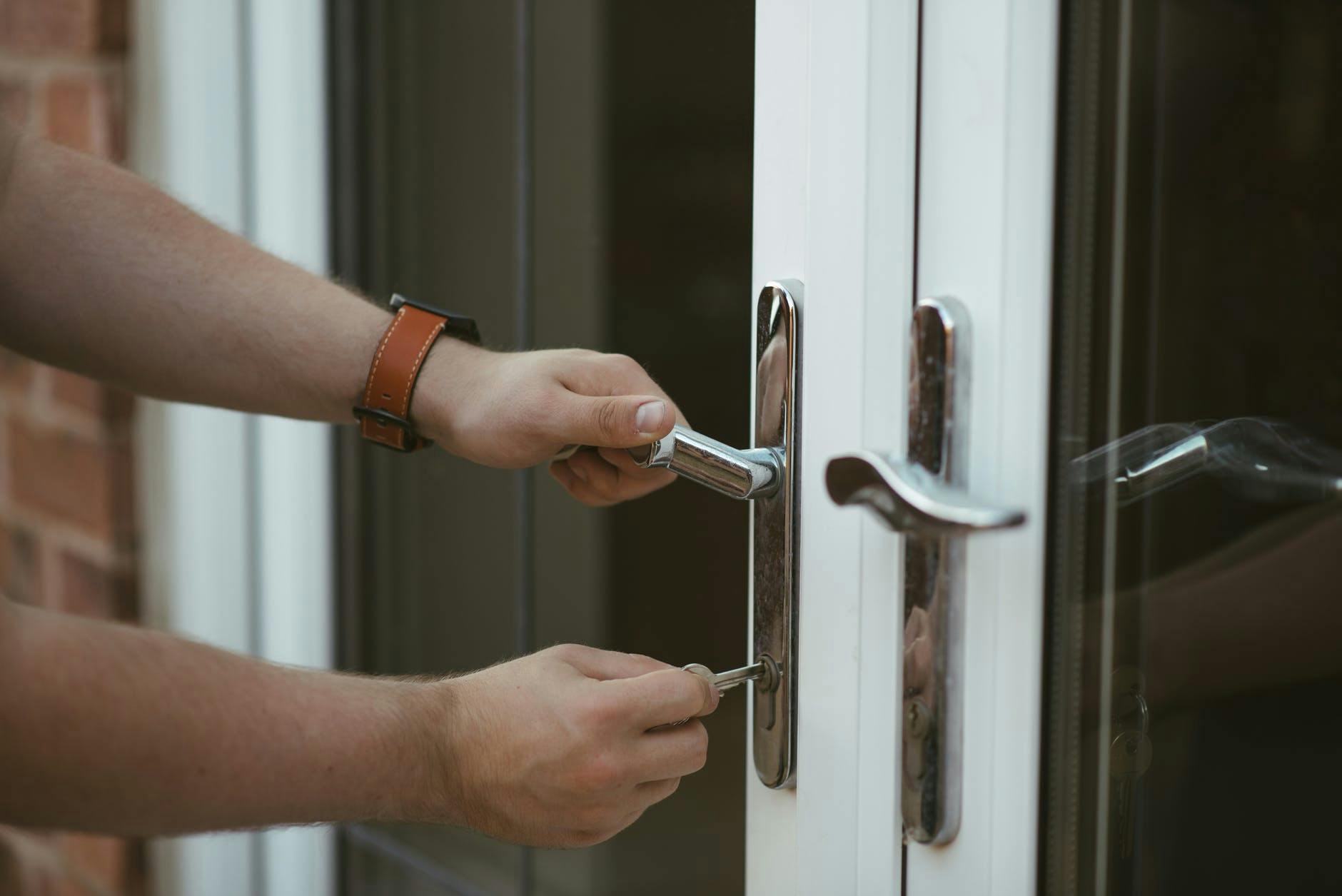
Finding The Perfect Place to Live in 2019
Finding a place to live that is in your budget is challenging. Finding a place that works for your budget and is safe, close to work, and that you actually like is a real challenge. Yet having a place to live that hits all those marks can drastically improve your quality of life.
Late in 2018, we started thinking about how to use technology to find the perfect home. Indeed, today’s home buyer is more empowered by technology and information than ever.
Using the best apps, websites, and planning techniques, this article shows you how to find the perfect place to live in 2019.
Why Finding a Great Place Matters and Why It’s Hard
Last year, the Washington Post released an article about the health effects of where you live. The conclusion was simple. Where you live is the #1 thing influencing how happy and healthy you are.
Experts and laypeople alike reached this conclusion.
Interested? Watch Bill Davenhall’s TED Talk all about how your environment affects health below ↓
Remember, where you live, sleep, and what you wear all serves as the backdrop for every minute of everyday. Improving this part of your life will have a outsized impact, so it is worth getting right.
You can think of your living space as an 80/20 rule of good living. The 80/20 rule is a theory that 20% of something often determines 80% of the outcome.
Yet location, budget, and time constrain our choices for a great place. This is especially true if you live in a competitive real estate market, like San Francisco or New York.
Find the right place to live requires a plan, a command of technology, and hard work. Below, we show you how to do the first two. The hard work is up to you.
Before The Search – Know What Your Are Looking For

brownstone style building
Perhaps the most important decision you will make — even more important than you house or apartment itself — is where you will be living. From cost of living to the energy of a place, finding a locale that vibes with you will trickle down into every aspect of your life.
For some, work or life events dictate where you live. For the lucky ones, you have no set destination. If you fall into this camp, see my three pieces of advice below.
1. Cost
If you have a taste for big city life, make sure you are in a position to pay big city bucks. On balance, big cities are more expensive in every way. Though this may seem like the price you pay, remember that mundane considerations tend to outweigh the glamour of going out in NYC or LA in the long terms.
2. Lifestyle
Remember, after you move to a place you will have thousands of small (and sometimes big) interactions with that community of people. Make sure that you can stand the people you will be surrounded by. The classic example is moving to NYC. New Yorkers tend to be very abrasive compared to other parts of the country, so this can be a real culture shock (it was for me) when moving there.
3. Longterm Match
Have your “endgame” sketched out before you go. Do you plan on living in this new place forever? Or just for a couple of years. If the latter, your considerations may change quite a bit.
Part 1 – Preparing for Your New Home or Apartment
Start with the basics
Too often we are drawn to the shiniest of solutions when faced with a problem. Technology may be a great tool but it’s even a better distractor. To start, I will give you a solid base with 3 low-tech steps.
3 Steps For Finding a Place to Live That Don’t Require a Computer…
1. Know What You Can Afford
Buying a home or renting an apartment is one of the biggest expenses most have. Every month, the bank or landlord will expect a payment from you…for a very longtime. In other words, you will have to pay a lot of money to someone all the time no matter what.
Yet during your search, you will likely run into a place that feels perfect with a price that is less-than-perfect.
Indeed, when a persuasive salesman presents a gorgeous space, budgeting will be the last thing on your mind. You will feel the urge to “do anything” to live in a space so great.
Prepare yourself by having a very clear budget and limit to what you can spend. Agreeing to a longterm contract or mortgage that you cannot afford is a disaster. You don’t want this.
Know what’s in your budget and what isn’t and don’t be afraid to be up front with a realtor about these realities.
Read this excellent article that details the budgeting process.
2. Start You Search as Soon as Possible
A life change may force you to find a new place to live without much warning. If this is the case, as soon as you know you will need to find a place to live, start looking.
Availability changes quickly, so you never know what will be available when. Your best bet is to start the process of reviewing places once you know that you will have to move.
Even if your leases overlap — that’s ok. If your goal is to find a place to live that you love, give yourself as many options as possible. Get moving ASAP to avoid getting pinned down by a deadline.
3. Know Your Commute & Neighborhood
Commuting is a big part of life for many people, especially if you live in a big metro. If you are unfamiliar with the area, investigate what getting to and from work/other places you go will be like.
Remember, living in the world’s best home and spending 2 hours a day commuting is still terrible. Don’t underestimate how much of a bummer this will be.
Still not convinced, read Tom Rath’s article about commuting.
*Pro tip plan your route with Google maps — check it a few times per week to get a feel for the traffic flows.
Part 2 – Using Technology to Boost Your Search
Using technology to gain an edge
The basics of budget, timeline, and area serve as the foundation of a successful place to live. The “finding” part — once you have that base of knowledge — is where we jump into the 21st century.
The internet and computers are best at sorting, discovering and monitoring. We will look at a few ways to use apps, websites, and other online tools to get you into that perfect home.
Technology gives you search superpowers in a few distinct ways. Below, we will look at each and show you how apps, websites, and other tech tools can empower you like never before.
1. Find and Watch All the Available Homes within Your Budget
Most of the great tech out there centers on finding places to live. If you have ever purchased a house, you know finding a great spot is only one of many steps.
Even so, the “search” part of the process is where most the technology exists.
Here are 3 noteworthy websites for finding homes…
1. Zillow.com
Zillow puts all the information about available homes and apartments on their website. You can search through results based on criteria — like rent price, # of bedrooms, et cetera. You can also set up email notices when Zillow adds something interesting. And it’s all very simple.
The only downside of Zillow is that some living spaces never find their way online. For whatever reason, some landlords and home sellers never put their place up for sale. In the coming years, this will likely become more and more rare.
2. Homefinder.com
Like Zillow, only with a few different search and interface features. I prefer Zillow as I find it to be the easiest to use, but you will want to try both to see what works best for you.
3. Trulia.com
You may have to do a double take when you log on because Trulia looks exactly like Zillow. That said, the filter includes lifestyle options — like crime and school quality. Trulia provides more information here than the others, which will save you time.
All in all, these three websites are excellent choices. Each has a mobile app, too, so you can take the search with you.
The websites include apartment, condos, and homes. Below, I’ve included 3 websites for apartment searching only.
1. Radpad.com
Very up-to-date listings and high quality rentals. I’ve personally used Radpad and can say it’s a great experience. The only down side is that you can only search in major metros.
2. Zumper.com
Zumper actually shows both homes and apartments. Their apartment listings include the landlords contact details and business information. This is useful when you want to get in touch about an apartment right away.
3. Abodo
Abodo is for the college-age apartment hunter. They focus on listings in college towns. For many first-time renters, this kind of information is perfect.
2. Dig Deeper into The Areas You Like
Once you’ve found a home or apartment, find out more about that part of town. If you are moving to a new city, crime, noise, or construction will damper your experience. If you are unfamiliar with the area you are moving to, this due diligence is a must.
1. Greatschools.org
Search the quality of schools by location. If you have kids, reviewing schools is a must. Greatschools has qualitative and quantitative measures of schools in the area, including performance reviews.
2. Broadbandnow.com
This site gives you the cost of internet for a given zip code. I wish someone would invent a “estimated utilities” cost calculator for a given area. Anyhow, in rural areas especially the cost of internet can vary, so be sure to check this out before moving.
3. Bestplaces.net
Bestplaces gives you a general overview of a city’s stats and demographics. Before moving, take a look and see if you would be a good fit for the community’s style of living. Also, you can find useful information about crime statistics and property valuations.
If you’ve been clicking while reading, you’ve seen how impressive these sites are. But the story continues. The next section shows you how people have used these tools in creative ways to find homes faster and in less time.
Part 3 – Putting it Together with Technology Case Studies
Connecting the dots with technology
For most, parts 1 and 2 provide enough tech and knowhow to find a great place to live. Most can take these tools and then get on the phone, arrange their finances, and move in to a new place.
But there are some who have taken this search process to a whole new level. Using technology, data, and ingenuity, the case studies below show you the future of finding a place to live.
1. Saving Money by Choosing the Right Time of Year
Writer Zhen Liu used data analysis to figure out the best time to sign a lease. In other words, throughout the year — as demand for apartments changes — prices change. Zhen’s article explains to use statistics to figure out the best time to sign a lease. This analysis resulted in up to $2000 in annual savings.
(Ms. Liu also wrote an article about the best cities to live in based on home price, unemployment rate, and crime. Read here.)
2. Location Relative to Popular Spots Affects Price
Rafael Pierre’s article “Going Dutch” examines how locational factors determine a home’s price. In other words, by looking at where a place is relative to desirable places (think waterfront, downtown area etc) you can determine how much more or less expensive that area will be. A warning – this article is science heavy.
3. Using Outreach Tools to Make The Process of Contacting People Faster.
San Francisco is the most competitive market for homes and apartments in the US. In his article, Vik Paruchuri uses Slack (a project management tool) to organize his search. See the article here.
These solutions show how technology can help find more options and better prices. That said, the authors are all technology professionals. For the average person, these tools aren’t very useful.
Pro tip for using technology to speed you response time and make outreach easier — use canned responses. Canned responses are built into Gmail and let you send a pre-written email template with a few clicks.
Wrapping Up
Stepping into your new place
One day we will be able to type the price, accommodations, and location that we want into our phones. From there, computers will do all the heavy lifting, finding the perfect home.
Until that day, you will need to use your brain and back when finding a place to live.
If you have a tool, website, or other tech-related tips for home hunting, please let me know and good luck with your search!



